
| Cleaning out the regulator vent hose on your RV's Onan MicroQuiet 3600LP generator may solve starting problems |
by Ellsworth Chou |
In the middle of a 7,300 mile circuit of North America in 2011, we discovered that the Onan MicroQuiet 3600LP generator in our 2006 Itasca Navion wouldn't start. We had not run it in many months (we are infrequent generator users). Online research eventually revealed a common cause: a restriction of the "regulator vent hose" on the generator. The most commonly cited culprit is insects, especially mud dauber wasps who build mud nests inside the normally open end of the hose.
Simply removing the hose allowed the genset to start easily. Clearing out the hose and replacing it fixed the problem to this day. I added a brass screen (from a garden hose washer with a built-in debris filter) to inhibit future critter-related obstructions.
The LP generator has a regulator to meter the high-pressure gas from the propane storage tank at a much lower pressure to the intake manifold of the generator's internal-combustion engine. During operation, a flexible diaphragm within the regulator moves back and forth in response to engine demand. On one side of the diaphragm is the regulated propane gas, and on the other is air from the atmosphere. A vent is provided on the atmospheric side of the diaphragm to allow air to freely move in and out of the regulator with diaphragm movement.
Additionally, a safety mechanism in most LP regulators allows propane to bypass the diaphragm in the event of unexpectedly high pressure. This flammable off-gassing is sent through a length of hose so that it can safely dissipate into the atmosphere, rather than dangerously collecting around the generator or under and inside the RV.
(click and hold on any images on this page to enlarge them)
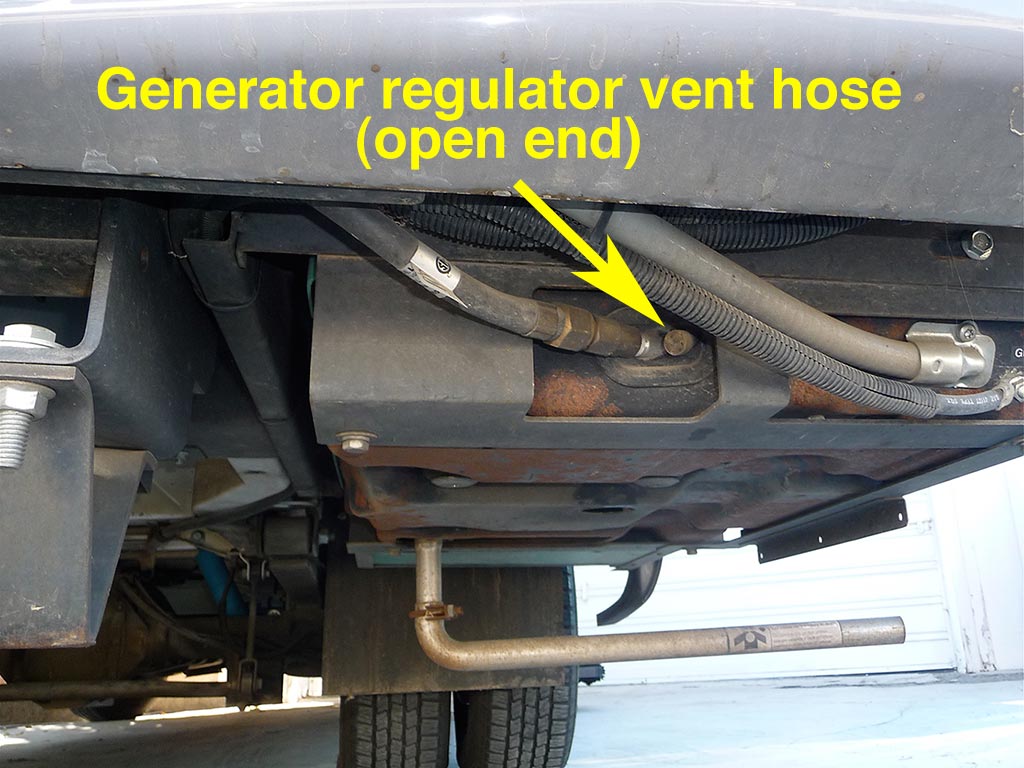 |
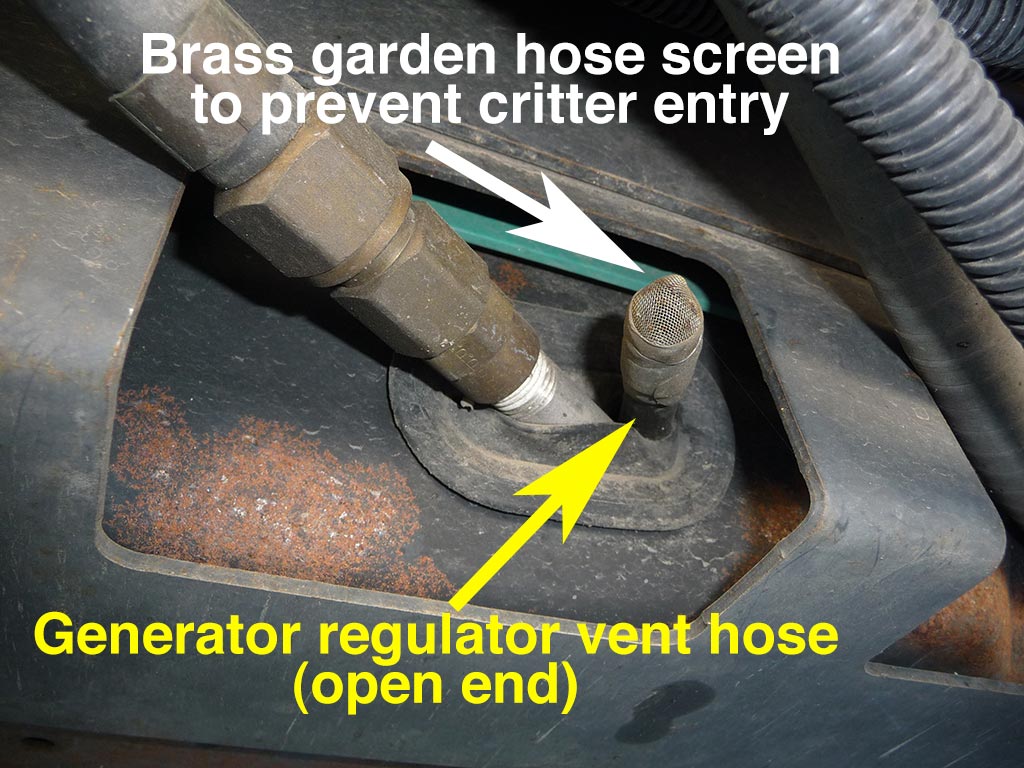 |
| Here's where the regulator vent hose exits on our 2006 Itasca Navion | Detail of the open end of the regulator vent hose, and my garden hose screen modification |
I removed the hose without moving the genset (generator and propane engine), although access was a bit restricted. Above, you can see where the previously open end of the hose protruded from the vehicle. (In these photos, I've added a brass wire mesh screen to the end of the hose to prevent any future critters from taking up residence in the hose.)
Having located the open end of the hose, I was thus able to follow the hose to its attachment point on the regulator itself (see images below). In our case, the regulator vent hose is merely pressed onto a nipple on the generator's regulator, and removal was just a matter of getting a grasp on the hose and pulling. I fished the rest of the hose out from the genset.
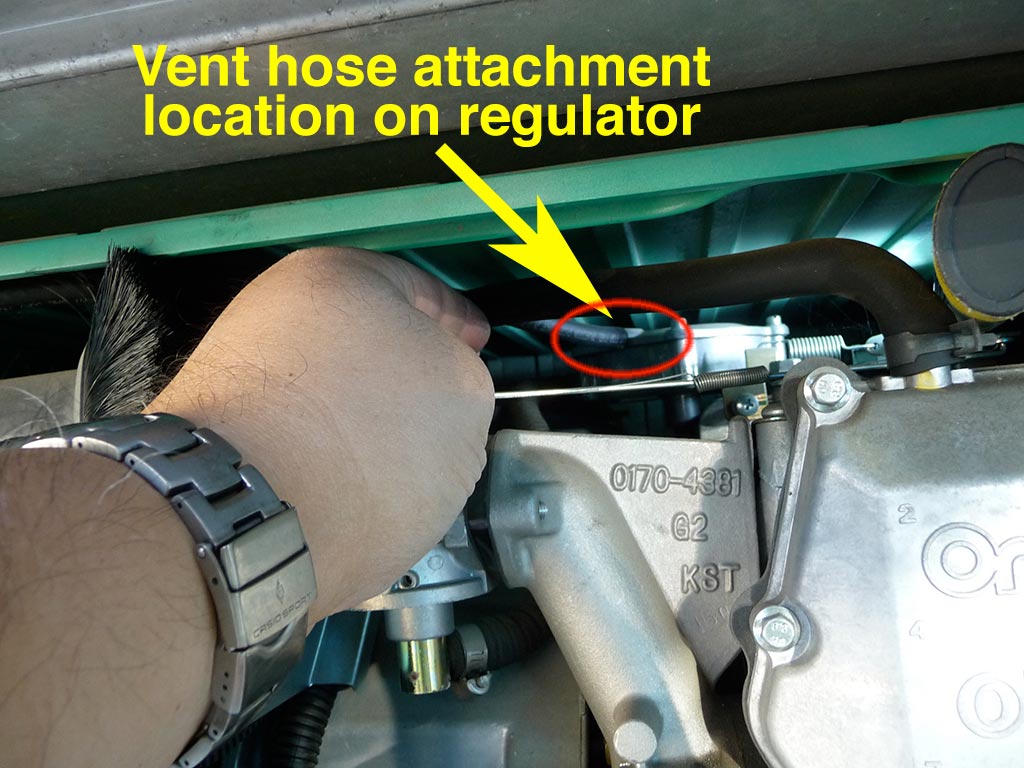 |
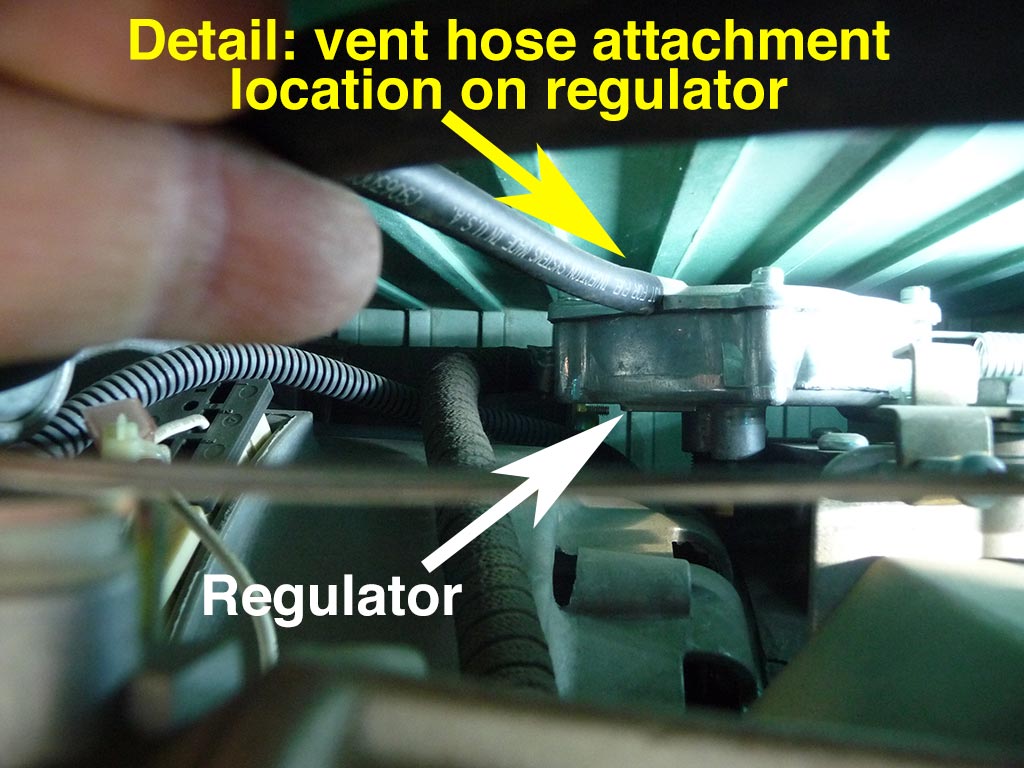 |
| The vent hose attaches to the regulator at the top center of the generator engine | Close-up shows the hose attached to a nipple on the regulator; this is tight access for large hands |
Once out of the RV, I crushed and rolled the hose on a floor under my shoe, expecting to see a large amount of debris come out. A very small volume of material actually came out, and I doubted that I had found the culprit for non-starting. I was able to pull the hose taut and see through the entire length, so I was certain that the path was clear. But the generator started easily without the hose, and continued to start easily after it was replaced. I suppose it's possible that the hose was pinched or kinked somewhere, but I don't think that spontaneously happened inside the genset case, since the generator had (months before) been previously starting normally. So it appears that there was just a tiny amount of material which sufficiently impeded the flow through the hose to prevent the LP regulator diaphragm from moving normally. (NOTE: Some readers have reported to me that their genset would NOT start with the hose removed, but did start immediately after clearing an obstruction from the hose and re-installing it. So apparently the regulator can be finicky about having the appropriate amount of restriction: too much or too little, and it won't start.)
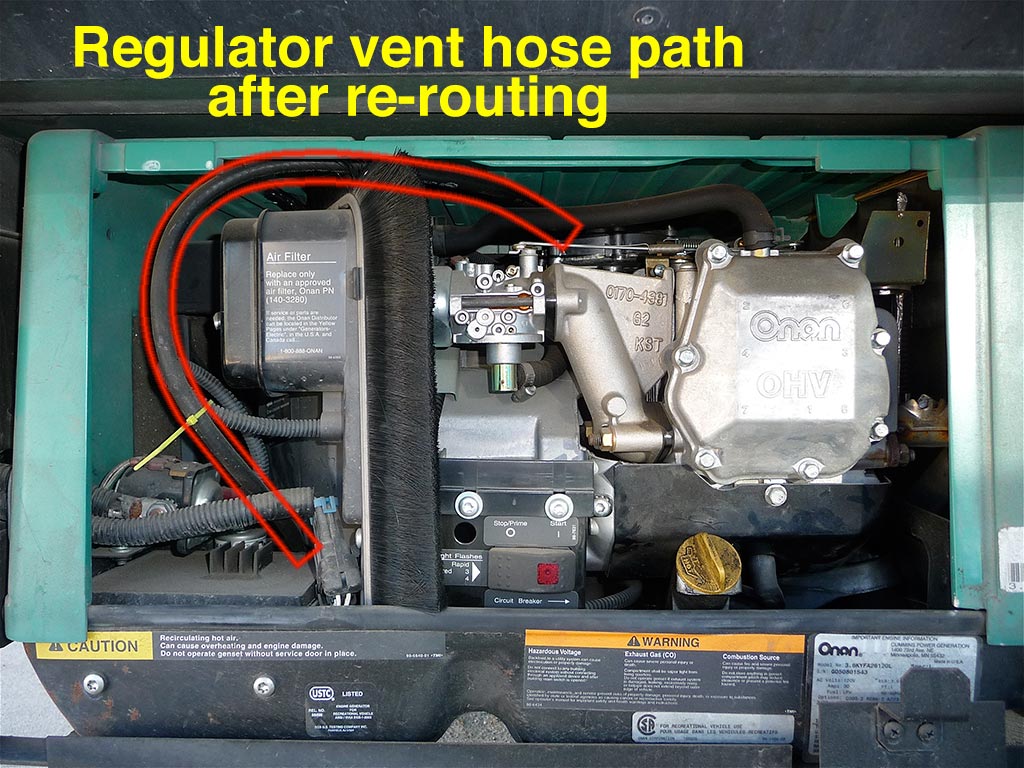 |
The red outline shows the new location of the hose when I reinstalled it, and not its original path |
The hose was originally routed through an awkward path, no doubt installed while the genset was not in a vehicle. When I reinstalled it, I chose to route it via a much simpler path, passing through the brush gasket separating the engine and generator sides of the genset. In the image above, you can see at left a yellow nylon wire tie used to help hold the hose in its new position.
I used a brass garden hose screen to prevent insects and other organisms from entering the open end of the regulator vent hose. I peeled off the hose screen's integrated washer, shaped the screen mesh down the sides of the hose and wrapped the screen and hose with self-sealing silicone tape, leaving the hemispherical end of the screen open for venting.
It occurs to me that in some climes, my hose screen solution might plug up from frozen moisture or road spray in freezing weather, but at least in our case, it's not that exposed to the underside of the vehicle. Take that into consideration as you explore filtering options.
(click and hold on any images on this page to enlarge them)
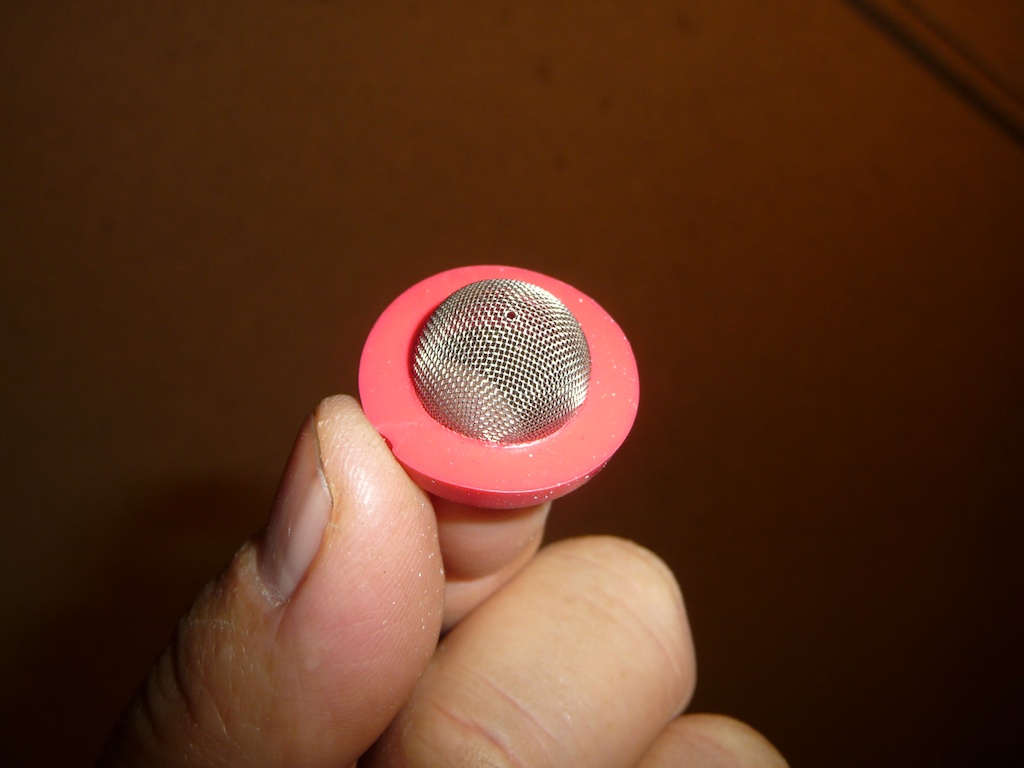 |
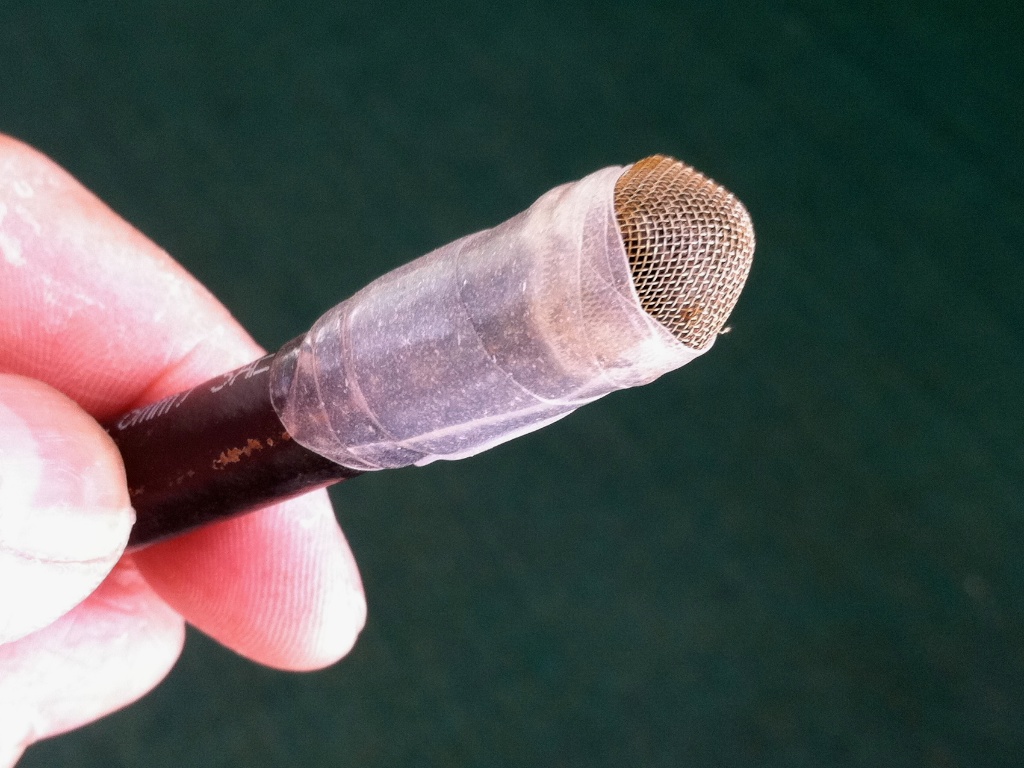 |
| I used a brass garden hose screen to prevent future hose blockages by critters | Silicone self-sealing tape was used to bind the garden hose screen to the regulator vent hose |
When I discovered the generator would not start, no amount of cranking resulted in its running. After simply clearing out the vent hose and replacing it, the generator started normally, and continues to work two years later.
Even if you aren't having this problem, I recommend that you add some sort of screen or filter to prevent critters from plugging up the vent hose.
